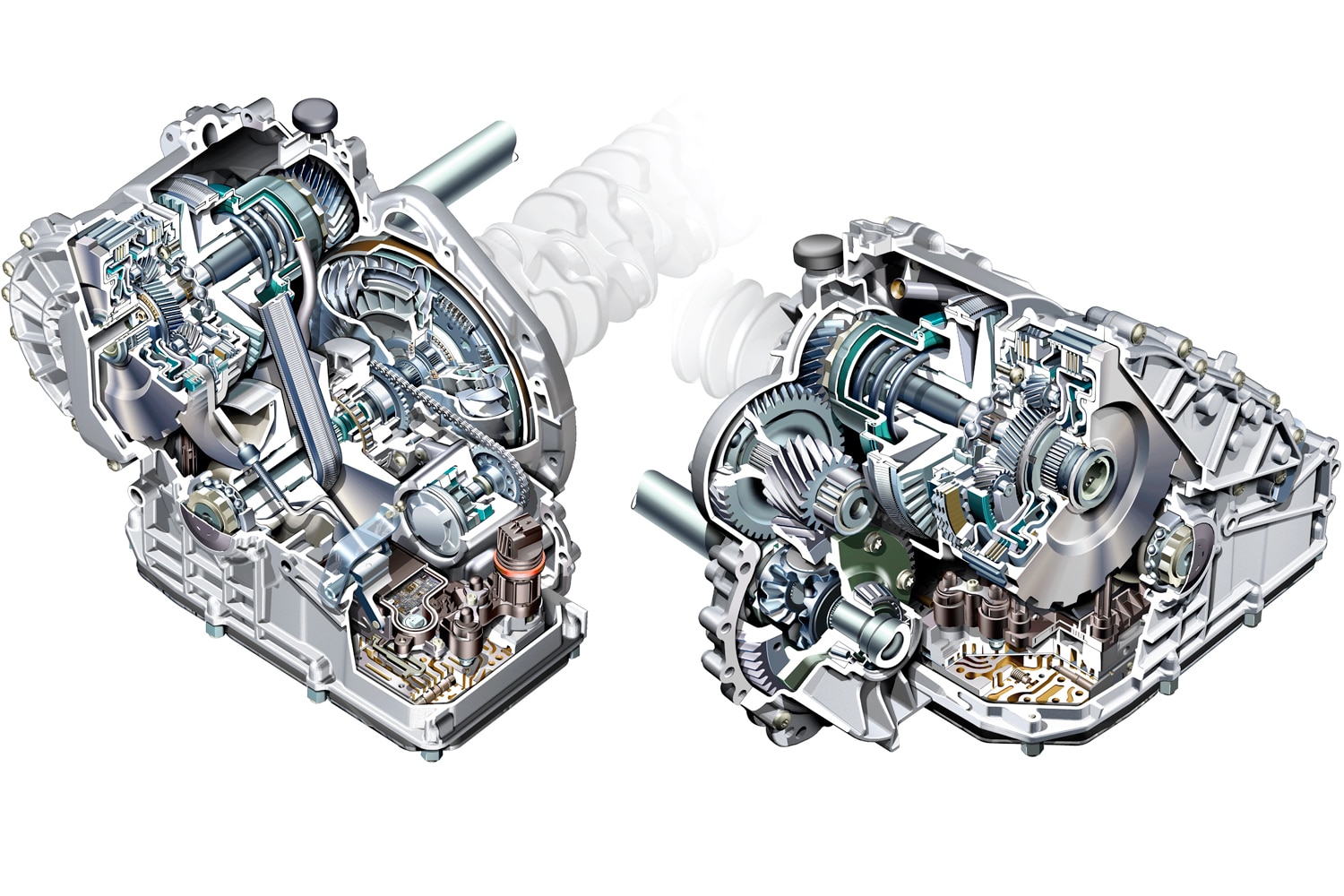What Is a Continuously Variable Transmission?
A CVT uses pulleys instead of gears for efficiency's sake, but not everyone likes the sensations that come with them.
 Mercedes-Benz
Mercedes-Benz
More and more, automakers are replacing their traditional automatic transmissions with continuously variable transmissions, or CVTs, which, instead of shifting between fixed gear ratios, can vary their ratios infinitely within a range. The main advantage of this is improved fuel economy. Because a CVT’s ratio adjustments are constant and don’t require the engine revs to fall like they do when a geared automatic shifts, the powertrain can remain at a sweet spot that either produces maximum power or uses the least amount of fuel necessary.
What is a CVT Transmission and what makes it different?
A vehicle with a CVT sounds and feels different under acceleration than a vehicle with a conventional automatic. With a traditional transmission, the driver often feels a subtle jerk as the car swaps gears. They’ll also hear a brief drop in powertrain sound as the engine slows for the shift, after which it resumes its audible climb toward higherRPM. Because a CVT doesn't actually shift between fixed gear ratios, it avoids that jerk and telltale rev-pause-rev sequence. (Some automakers, knowing how much people hate change, have actually programmed CVTs to simulate those shifts; more on that later.) Instead, the driver may hear the pitch of the engine change or nothing at all when the CVT alters its ratio.
Under acceleration, a CVT’s smooth, stepless adjustment is accompanied by the sound of the engine revving up just once and staying there, then settling down once you back off the accelerator pedal. Some find the lack of synchronization between the rise of engine speed and acceleration disconcerting. Similarly, the drone of an engine at constant speed can be off-putting. Acceleration can also feel sluggish, as it often takes a moment for the transmission to find the best ratio once you mash the pedal. Engines with a lot of torque, such as a V-6 or turbocharged four-cylinder, can minimize this issue, helping get the vehicle moving even when the ratio is not ideal.
One Solution: Virtual Gears
Toyota’s Dynamic-Shift CVT, offered in the Corolla sedan and hatchback, addresses these issues at least in part by including a distinct launch gear. The car uses this “first” gear for starting from a stop, improving response and acceleration, and then sends power through the continuously variable portion of the system, which manages ratios more efficiently.
Drivers can treat a CVT as they would a traditional automatic, selecting drive and letting it do its job without further input. Many modern CVTs also allow the driver to “shift” through simulated gears, which are predetermined ratios the transmission moves between. Some will even mimic stepped gear changes on their own, either by default or in a certain mode. This negates some of the CVT’s efficiency advantage but addresses the auditory issues.
What’s Inside?
You might wonder what’s inside a CVT, if not gears. This transmission has a pair of pulleys—one for the transmission’s input and one for its output—connected by a belt or chain. Adjusting the diameter of one or both of those pulleys changes the ratio.
As with any unfamiliar technology, we suggest you try before you buy, doing a thorough test drive of a CVT-equipped vehicle to make sure you’re comfortable with its behavior. Be sure to do a little research and come prepared to play with the particular CVT’s different modes and settings, as these can have a big impact on your perception of the transmission.
Today most major automakers offer a CVT somewhere in their lineups—generally in cars and crossovers, not so much in large SUVs or pickups. They go by different names depending on the manufacturer, but most have “CVT,” “continuously variable,” or the suffix “-tronic” in their title. Some well-known examples include Audi’s Multitronic, Hyundai-Kia’s Intelligent Variable Transmission (IVT), Nissan’s Xtronic, and Subaru’s Lineartronic.
 Mercedes-Benz
Mercedes-Benz
In the past, Mercedes-Benz equipped some of its smallest vehicles with a CVT for the Europe market. One example is the second-generation A-Class (shown above). While that car came standard with a manual transmission, many drivers spec’d the available Autotronic CVT (pictured at the top of the article) for the convenience of letting the car do the gearchanges.
Written by humans.
Edited by humans.
 David Gluckman
David GluckmanDavid Gluckman has over a decade of experience as a writer and editor for print and digital automotive publications. He can parallel park a school bus, has a spreadsheet listing every vehicle he’s ever tested, and once drove a Lincoln Town Car 63 mph in reverse. When David’s not searching for the perfect used car, you can find him sampling the latest gimmicky foodstuffs that America has to offer.
Related articles
View more related articles